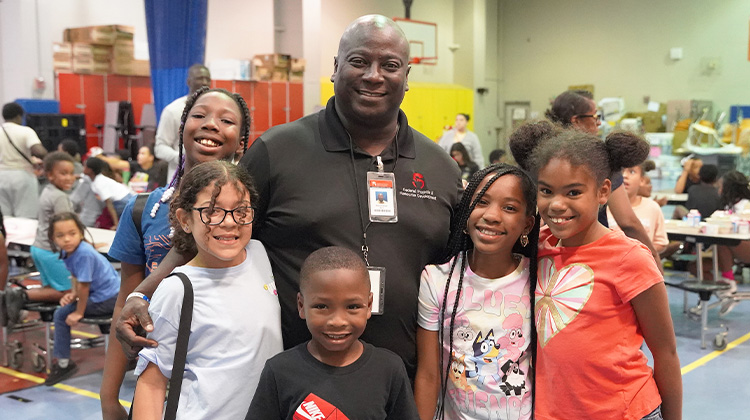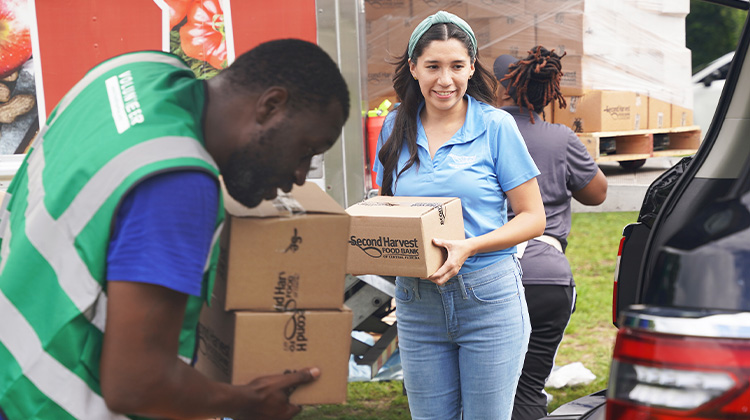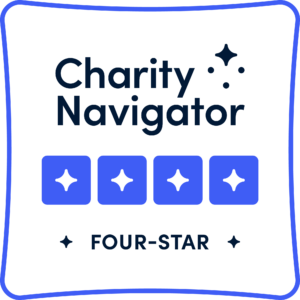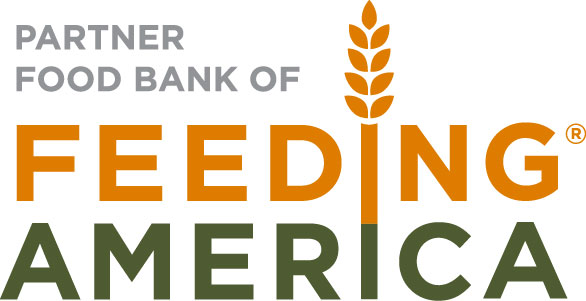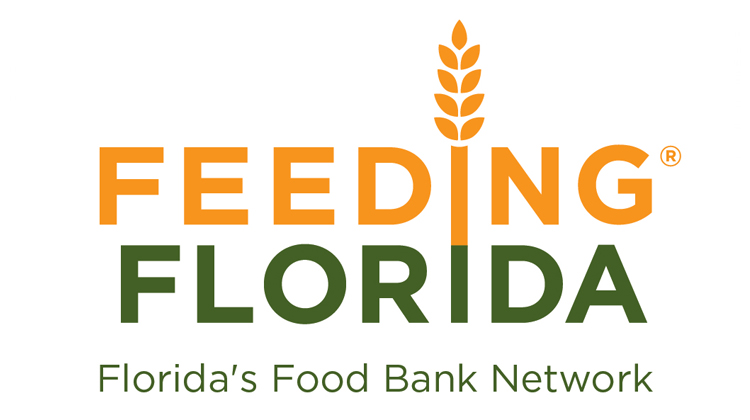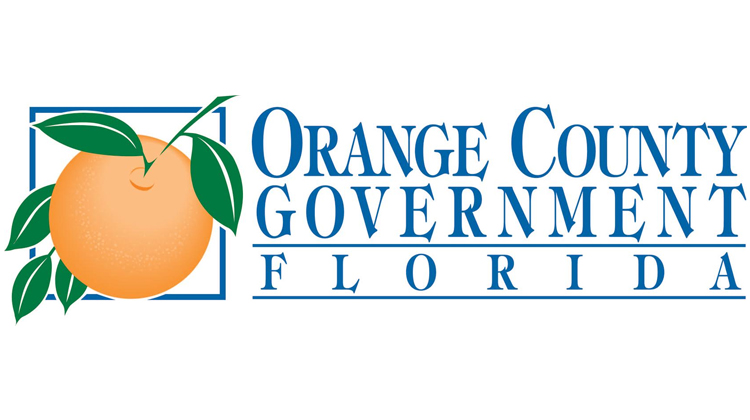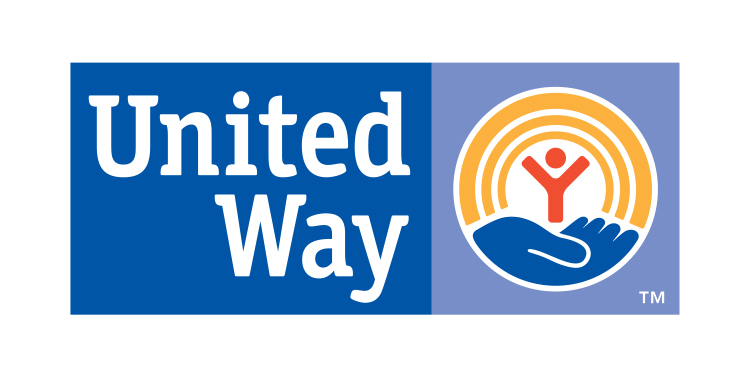Health and hunger are deeply connected, and access to nutritious food is essential in preventing diet-related chronic diseases. Unfortunately, for many neighbors facing hunger and trying to stretch a limited budget, fresh and healthy foods are often the first to go, replaced with lower-cost, calorie-dense options. While this may keep food on the table, it can contribute to long-term health issues and increased healthcare costs.
WFTV’s Central Florida Spotlight recently hosted a conversation with Dawn Koffarnus, Second Harvest’s Chief Health Systems and Financial Officer, and Second Harvest’s Maureen Hawkins, director of health and hunger strategies. They discussed Second Harvest Food Bank of Central Florida’s commitment to providing access to nutritious food, building strong healthcare partnerships, and offering nutrition education to support the well-being of our community. Watch the entire conversation below.
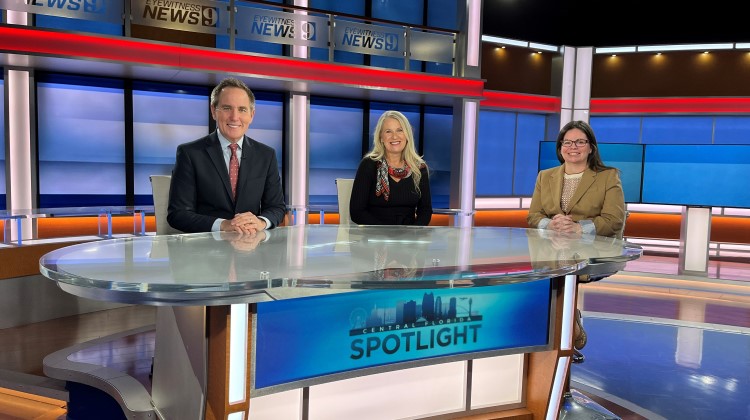
Second Harvest Food Bank’s innovative health and hunger strategies tackle some of the root causes of why 1 in 8 Central Florida neighbors face hunger. By taking a holistic approach that considers the high rates of chronic, diet-related disease and soaring healthcare costs, the Food Bank collaborates with feeding partners and healthcare practitioners to effectively use food as medicine.
“We have a spectrum of care available to our community members,” explains Dawn.
At one end of that spectrum are traditional food pantries and partners. By expanding access to healthy, nutritious foods like fresh fruits and vegetables, lean proteins and dairy products, neighbors can visit a network of over 870 feeding partners to take home the foods they need to thrive.
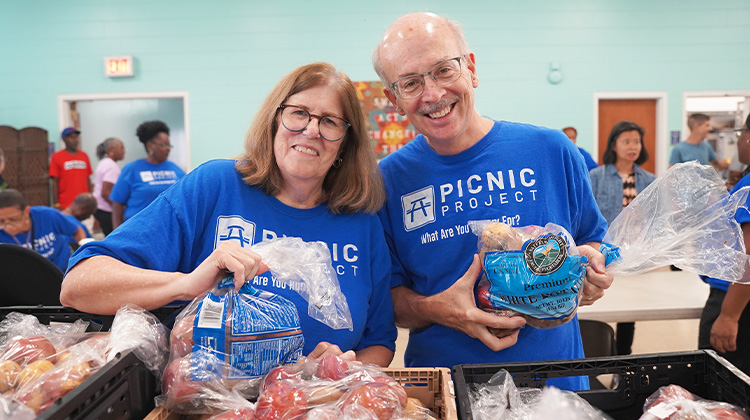
Second Harvest is collaborating with its feeding partners to become a certified nutritious pantry, where expanded healthy food choices, nutrition education, and nudges within the pantry will help neighbors navigate and make healthier selections.
“At the other end of the spectrum are healthcare partners and practitioners,” emphasizes Dawn. “Partners is a keyword because we can’t do this alone.”
Screening patients for food insecurity is the first step. Once that is complete, patients can be referred to Second Harvest and the food resources and nutrition needed, whether the solution is a local food pantry, groceries designed to support maternal health or a medically tailored meal prepared for a patient with chronic kidney disease.
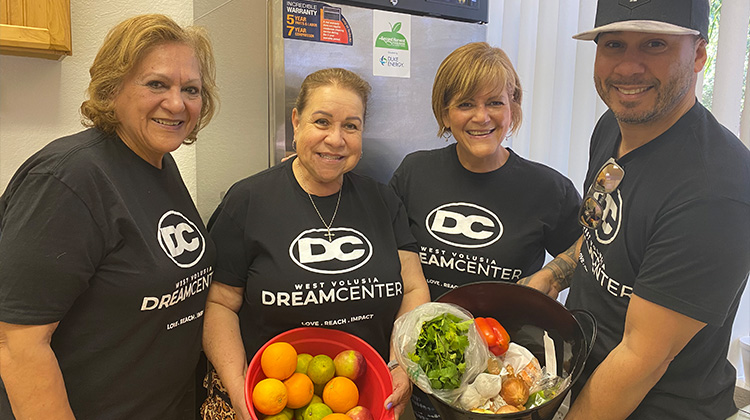
“We talk about food being more than just a meal; it is really someone’s health and well-being,” says Maureen. “All of these different efforts are really trying to make sure that everybody has access to the healthiest food that they can.”
Nutrition education is a powerful tool that helps neighbors learn more about available foods. These classes teach courses on reading food labels, introducing new foods and exploring different food preparation techniques. Classes meet throughout Central Florida, often at or near a food pantry or in communities with a high number of SNAP-eligible residents.
Maureen explains that studies show a connection between being food insecure, receiving SNAP benefits, and the ability to address chronic conditions like obesity, diabetes and hypertension. Nutrition education can intervene and help recipients learn how to stretch the limited grocery dollars or boost the nutrition content of a recipe using low-cost items or items available at local food pantries.
“Changing habits can be daunting,” adds Maureen. We’re here to let people know that help is available.”



